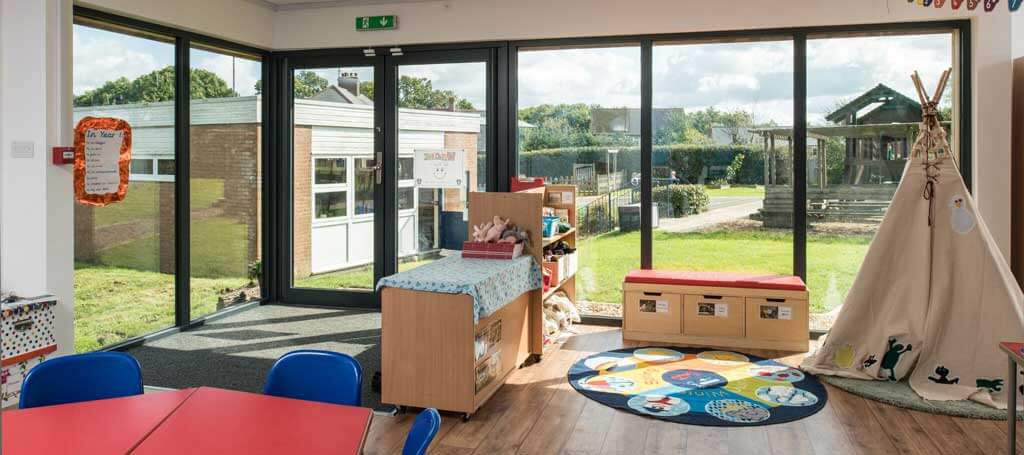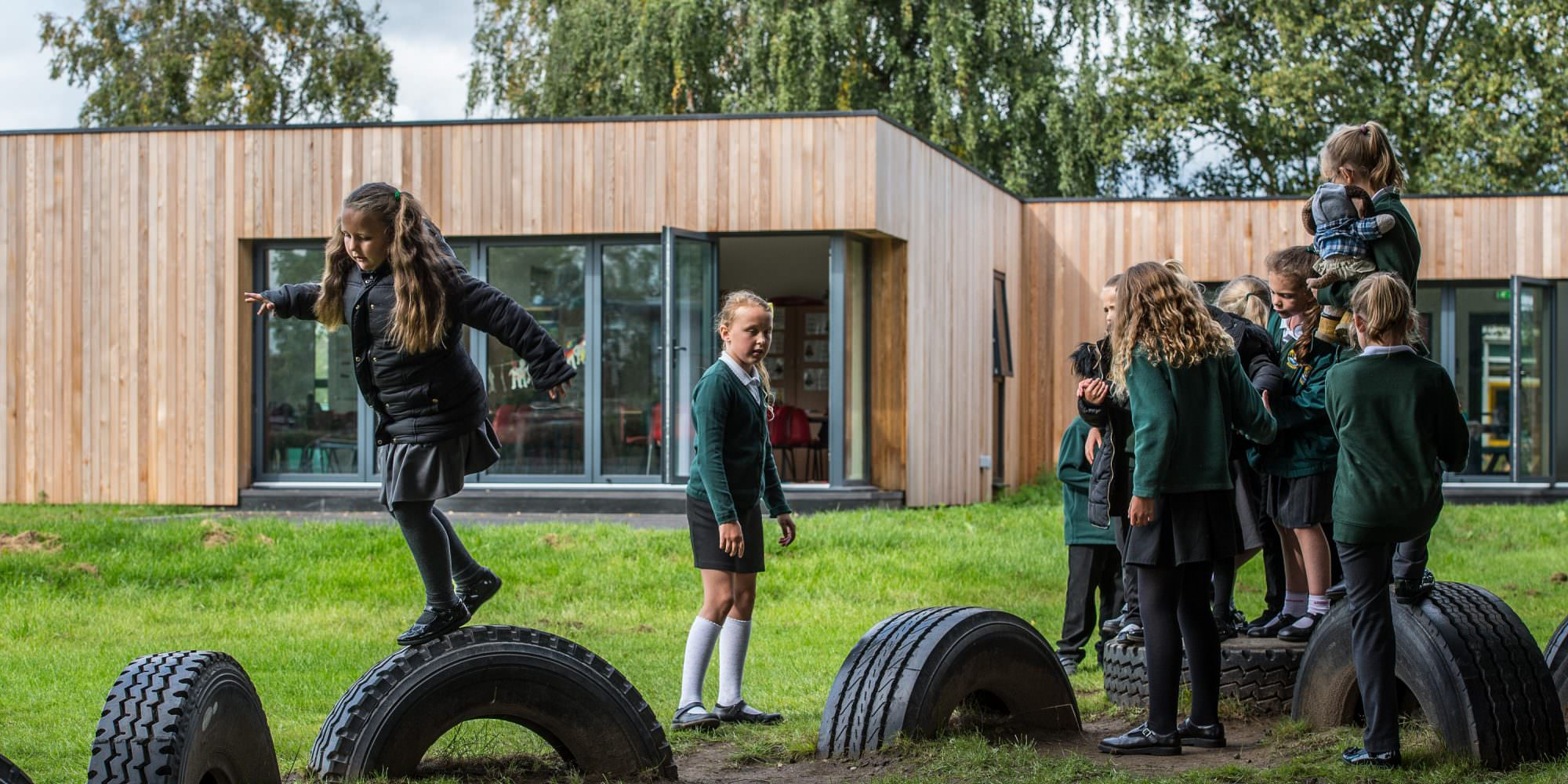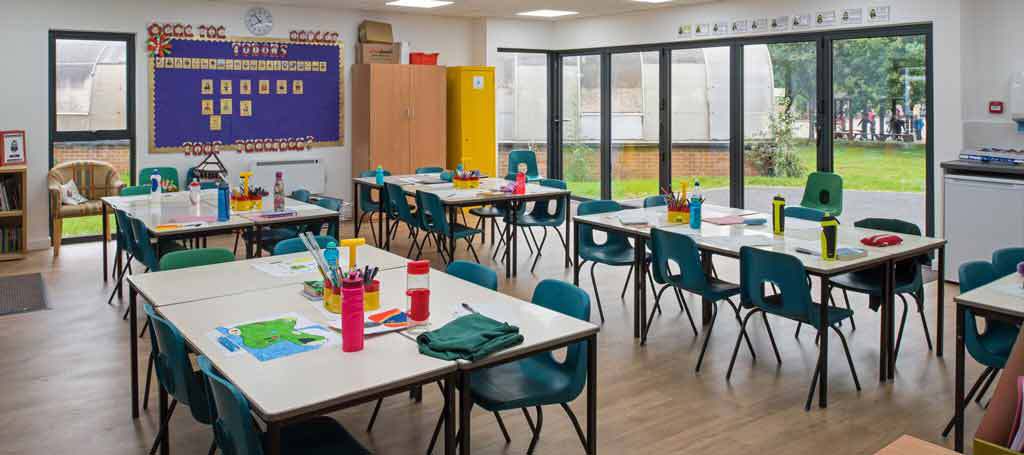
9 ways to create calm classrooms for better learning outcomes
Experienced teachers know that chaotic classrooms are exhausting to work in, not least because they can stimulate disruptive pupil behaviour. Conversely, they know that a calm classroom environment can improve pupil performance, while helping them sustain their own energy throughout the day. The science backs them up, showing that a calm classroom culture can help optimise deep learning and improves pupil’s wellbeing, as well as retain talented teachers.
As we at Vertis know from our work designing SEN classrooms for specialist SEND schools, young people who enjoy school have better attendance records and better educational outcomes. Even those with no specific education, health and care (EHC) plans can benefit from the inclusive designs of SEND friendly spaces. Safe, calm classrooms also facilitate healthy social interactions, including cooperative learning and friendly play, that are vital to childhood development.
We are passionate about designing calm classrooms with the physical and psychological needs of all children in mind. Our aim is to create positive stress-free learning environments in schools that empower teachers to help students reach their full potential. In this article we’ll set out our top tips for creating a calm classroom, starting with things you can do even with stretched budgets.
A deliberate process to creating a calm classroom environment for all your pupils
1. If you are working with an old building, the first thing to think about it how to optimise your existing classrooms for calm study. Ideally, you will want to adapt them to changing teaching requirements. Lightweight tables and chairs, as well as bean bags and cushions, will give you the flexibility to easily reconfigure layouts to suit individual learning or group work.
2. Soft furnishings will also help create a homely, welcoming atmosphere that is so important for helping many young pupils relax and enjoy school life. They will enable you to transform sections of the classroom into comfortable reading circles, or chill-out zones for quiet reflection that support your students’ mental health. This can help nurture a calm classroom environment by reducing stress and noise levels, which in turn helps pupils learn better.

3. Letting children personalise their classrooms with artwork can give them a sense of familiarity and belonging. Going further and providing adjustable furniture, individual lighting controls, and even interactive displays that allow pupils to control aspects of their learning experience, can help foster a sense of ownership and responsibility, which encourages calm behaviour.
4. Flexible classrooms will enable you to accommodate pupils with a range of learning abilities and preferences. They give students the freedom to move around without disrupting others, so enabling them to take part in different activities, such as arts and crafts or reading, while still feeling part of the same class. Modern, modular and mobile classroom systems enable old schools to add this flexibility quickly and affordably without needing a complete rebuild.

5. Adding sensory accessories, such as headphones with calming music, can also help individuals de-stress and focus on personal studies. In our work, providing bespoke services to education providers, we’ve seen how these sorts of technologies, as well as acoustic panels and quiet zones, can help create calm classrooms that support pupils with diverse sensitivities.
6. We all know different colours can affect our moods; blues and greens can be cool and calming, reds and yellows can be warm and energising – but dull colours can leave us feeling lethargic and uninspired. It’s therefore important to think about how the decoration in different areas of your school can help create the desired response in your students. However, bold primary colours can overstimulate students, particularly those with colour sensitivities. Our suggestion is to choose a palette of soothing pastel colours that children find both calming and uplifting.
7. Ideally, classrooms should get plenty of natural daylight, which has been proven to improve pupils’ results. However, this is harder to implement in old school buildings – but not impossible, particularly if you get professional advice from experienced designers. One way to compensate is to use daylight-coloured LED lighting, which is also environmentally friendly. We build our modular classrooms to maximise natural light while minimising glare. Where practical, that means orienting them east-west so the sun doesn’t shine directly on students.

8. Temperature and air quality are also both fundamentally important to performance. Rooms that are too cold or too hot, particularly with poor ventilation, can leave children and teachers feeling sleepy or restless and irritable. Vertis ensures its classrooms are well ventilated by using modern air-conditioning to deliver energy efficient heating and cooling. This makes it easy to maintain an optimum temperature for effective learning of 20°C in classrooms.
9. Finally, where possible, try to connect classrooms directly to outdoor learning and recreation spaces for an added sense of calm and wellbeing in students. Studies show that exposure to nature, including plants and water features, helps reduce stress and improve focus. Large folding or sliding doors with A-rated safety glass windows not only let in plenty of natural light but can make your natural surroundings feel like a classroom extension. They also make it easier for children to get outside for much needed exercise and fresh air throughout the year.

Let Vertis help you create calm classrooms for your students and teachers
If you’d like to find out more about how Vertis can help your school create calm classroom environments, please request a free consultation. We’ll arrange to visit at a time that’s convenient for you to discuss your challenges, needs and ambitions. As part of our commitment to sustainability, we will donate meals to feed children twice a day for an entire school in Burundi, one of the world's poorest nations for every school building we complete.
Find out more – call or email us today.
